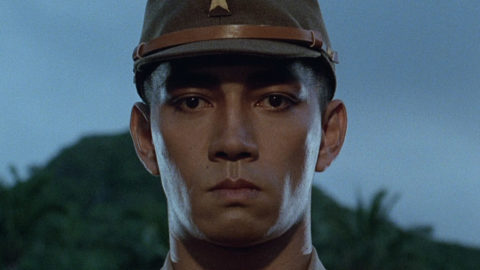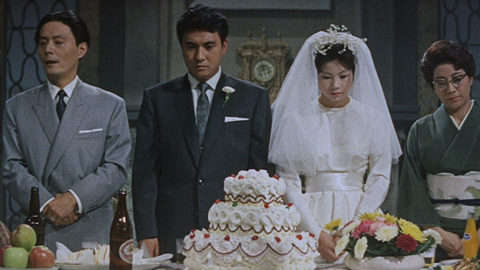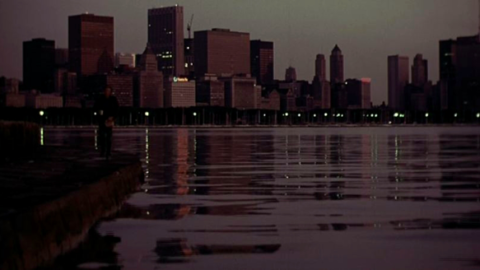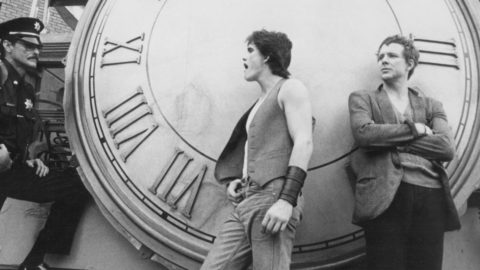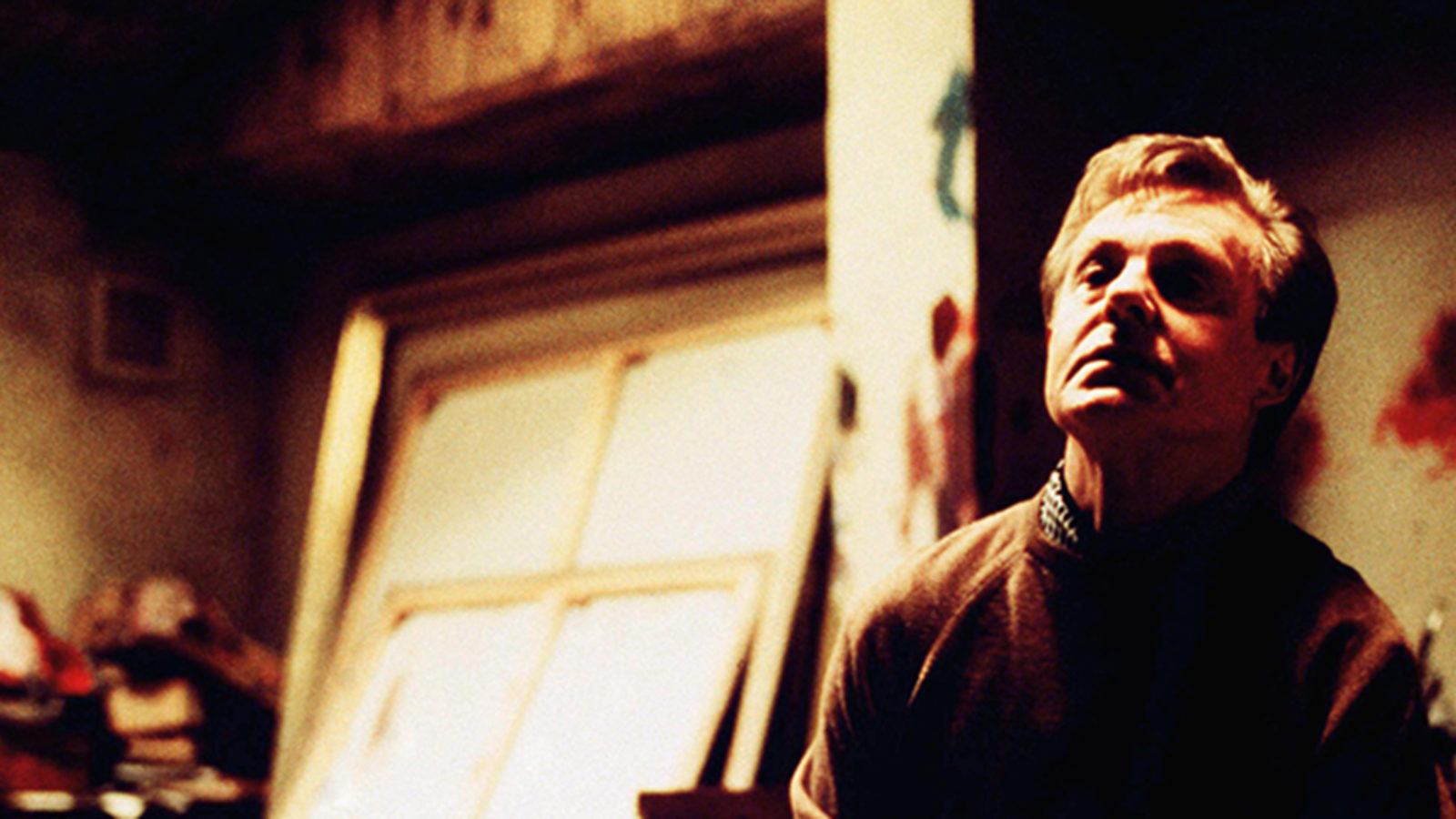
Playing Along: Fleshed Out
The opening credits of Love Is the Devil, John Maybury’s unconventional 1998 biopic of the painter Francis Bacon, play out over elusive, elliptical images of a man falling through a black, undefined space. The figure’s descent is accompanied by the dissonant wails of Ryuichi Sakamoto’s score, which helps to establish the emotional world of both the film and its artist subject. The frames of Bacon’s paintings are unusually unforgiving, delineating a world of tormenting loneliness whose inhabitants are often cordoned off in yet another layer of encasement, be they clinical vitrines or various doorways to oblivion.
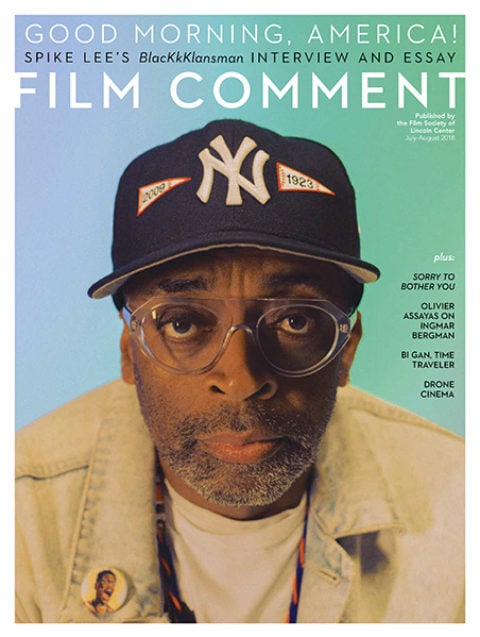
The atonal chilliness of the soundtrack gives another dimension to this sense of isolation, and recalls Bacon’s musical contemporaries, the postwar modernists who, like the painter, made their names giving voice to the subjective extremities of the nuclear era’s existential turbulence. And yet there’s something subtly different about Sakamoto’s piece, a reflective distance—like one of those abrasive, confrontational works but overheard from a neighbor’s room. It’s less apocalyptic bang than plaintive, vulnerable whimper.
The plummeting man, delivered from his purgatorial free fall, lands with a crash and a curse in the painter’s studio. He is revealed to be George Dyer, an East End burglar and Bacon’s lover, model, and muse, whose suicide while in Paris for the opening of Bacon’s triumphant retrospective at the Grand Palais looms over the artist’s death-obsessed later work. The commotion of Dyer’s arrival—he is played by hunky Bond-to-be Daniel Craig—attracts Derek Jacobi’s catty Bacon, who dresses Dyer down before offering him an ultimatum: “Come to bed, and you can have whatever you like.” The transactional starkness of this meet-cute is indicative of their future relationship, with the implacable Bacon proving quite the domineering lover, despite the submissive role he takes in sadomasochistic play. Foregoing the bildungsroman sweep of the traditional artist biopic, Maybury’s film hones in on Bacon’s relationship with Dyer from this point of introduction until its tragic conclusion.
Neither working in lockstep with Maybury’s movie nor against it, Sakamoto’s score has a sort of contrapuntal relationship with the film, revealing an outside intelligence reacting to the material with a significant degree of independence. The resulting music is dense, rich, and varied. From the 26 disparate tracks that make up the film’s soundtrack, one can envision a range of cinematic approaches to both Bacon’s art and his doomed love. Sakamoto, whom I interviewed briefly over e-mail, said that he was given no instruction at all from the director, besides the request to “please write a piano soundtrack for the film,” and his autonomy is evident.
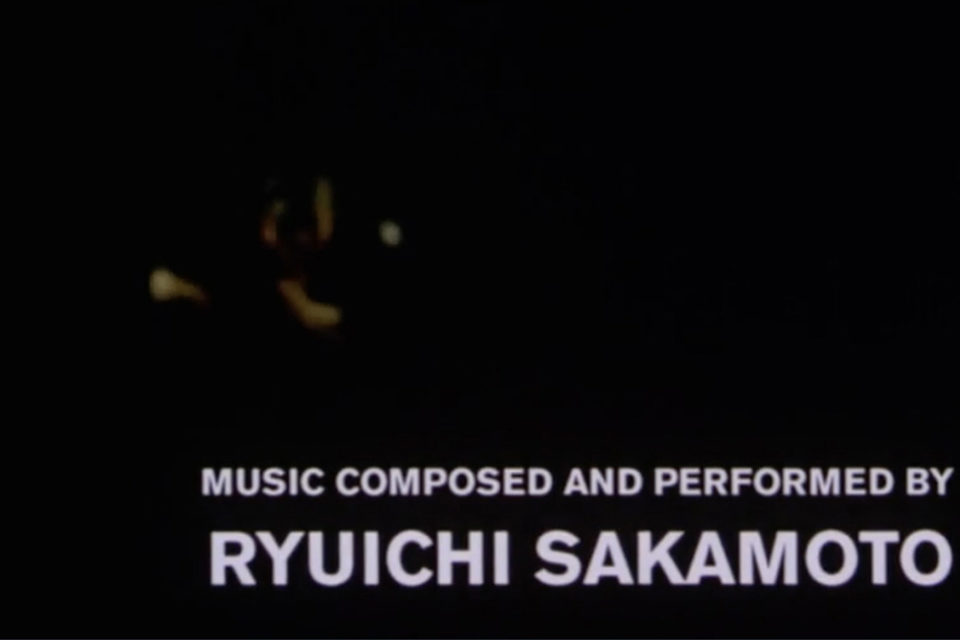
Sakamoto’s score helps the director to handle one crucial practical issue with the production. Maybury was barred by Bacon’s estate from showing any of the painter’s actual work (the most salient appearance of his art comes when a sleepy and shit-faced Dyer mistakes one of Francis’s mutant toilets for the real thing and urinates all over an unfinished canvas). In lieu of the paintings themselves, Maybury goes to strenuous lengths to replicate and evoke their style. He and cinematographer John Mathieson adhere to Bacon’s meaty color palette and draw upon a wide range of cinematic techniques for warping the image, shooting through glasses and employing very wide lenses, reduced frame rates, superimpositions, and dissolves.
Despite the considerable depth of the director’s bag of visual tricks, the music proves necessary for realizing the particular intensity of Bacon’s paintings. Sakamoto defines “distortion” as “the strongest characteristic of Bacon’s art,” and his soundtrack approaches this idea in disparate ways. The first scene of Bacon and Dyer’s vaguely martial lovemaking is accompanied by an enveloping, Lynchian drone. As Bacon experiences nearly orgasmic pleasure at the atavistic spectacle of a boxing match, an industrial musical passage juxtaposes squawking bleeps and bloops against a roiling backdrop of feedback. Insert shots of a man covered in red paint—or is it blood?—are accompanied by what sounds like the moist machinations of a chewing mouth, for an extra visceral punch.
These moments show why, counterintuitively, Sakamoto’s music might be the element of the film best suited to capturing the essence of Bacon’s paintings. The camera rarely approaches the organic, unpredictable thrill that emerges from the progression of Bacon’s brushstrokes. The pictorial content of the painter’s work isn’t exactly known for its emotional delicacy, and without his distinctly painterly mastery, much of the Baconian imagery comes off as Grand Guignol provocation. Working upon a wholly different sense than the painter, Sakamoto can take greater interpretive leeway with Bacon’s visual art: on one hand, he can explore Bacon’s aesthetic balance between the abstract and the figurative, and on the other, create a sonic counterpart to the silent screams of Bacon’s tortured subjects.
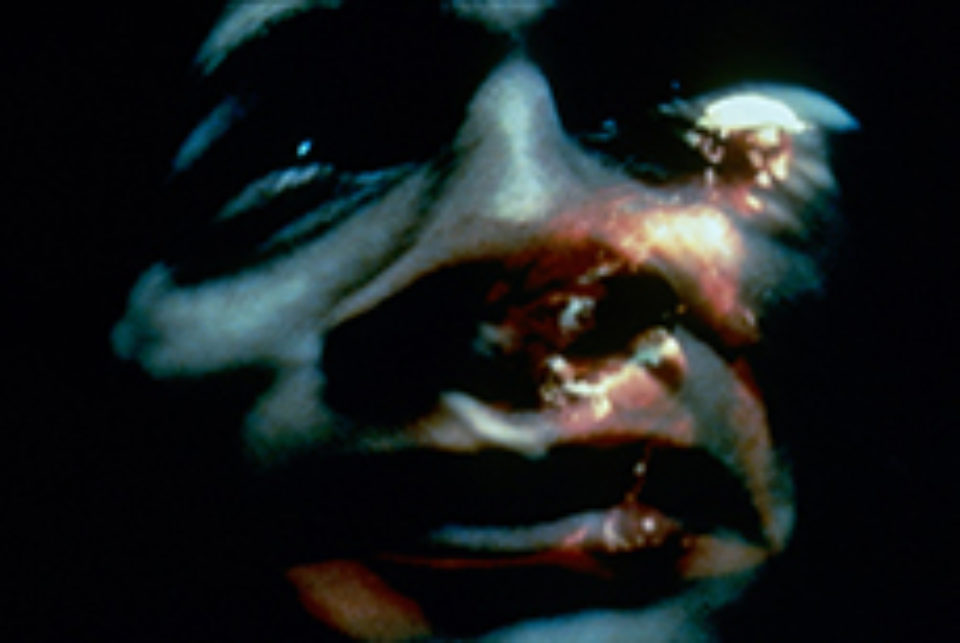
Love Is the Devil. Photo: BFI
The stylistic eclecticism of the film in turn accords well with the experimentalism of Sakamoto’s soundtrack. When Bacon and Dyer arrive in New York for a short visit (Bacon, good modernist that he is, is enthused to check out Mies and Johnson’s Seagram Building), Sakamoto provides a jagged piece of topsy-turvy atonality well suited to the city’s geometry. Such atonality is also suited to our first glimpse of Dyer’s suicide attempts, with Craig teetering on the edge of a Manhattan skyscraper, shot expressionistically from below.
Maybury—who directed videos for the likes of The Smiths and Sinead O’Connor before teaming up with fellow Derek Jarman collaborator Tilda Swinton on the Nazi-era cross-dressing drama Man to Man (1992)—also gives Sakamoto the opportunity to score excerpts from other films. For a scene where Bacon appalls a friend by visibly savoring the violence of the Odessa Steps sequence in Battleship Potemkin, the composer takes a crack at silent-film music, resulting in a sickly organ-sounding synth, the melody pared down to a handful of dissonant notes. This recurs when Bacon speaks of the aesthetic pleasure he takes in car crashes, with Maybury’s illustration of the idea looking a good deal like one of the mangled autos littering the countryside in Godard’s Weekend. In his correspondence, Sakamoto mentioned that he was thinking of composer Antoine Duhamel’s Romantic, fatalistic work on Weekend and Pierrot le fou, and while the music in this scene is very different, the lyricism of those scores is on display elsewhere.
Love Is the Devil enters into a progressively antagonistic relationship with the painter. As is suggested by the movie’s subtitle, “Study for a Portrait of Francis Bacon” (a play on the title of Bacon’s 1963 painting “Three Studies for a Portrait of George Dyer”), the movie works to turn the tables on the painter, and the script’s warts-and-all characterization of him is almost all warts, further intensified by the mannered sadism of Jacobi’s performance. Perhaps without fully intending to, the movie’s portrayal of Bacon as a performatively nihilistic fop, tittering away as the Odessa masses are slaughtered or as his lover sinks into suicidal despair, accords with the most severe critiques of the painter, such as John Berger’s contention that “he describes horror with connivance—his descriptions lack not only the huge perspective of compassion but even the smaller perspective of indignation.”
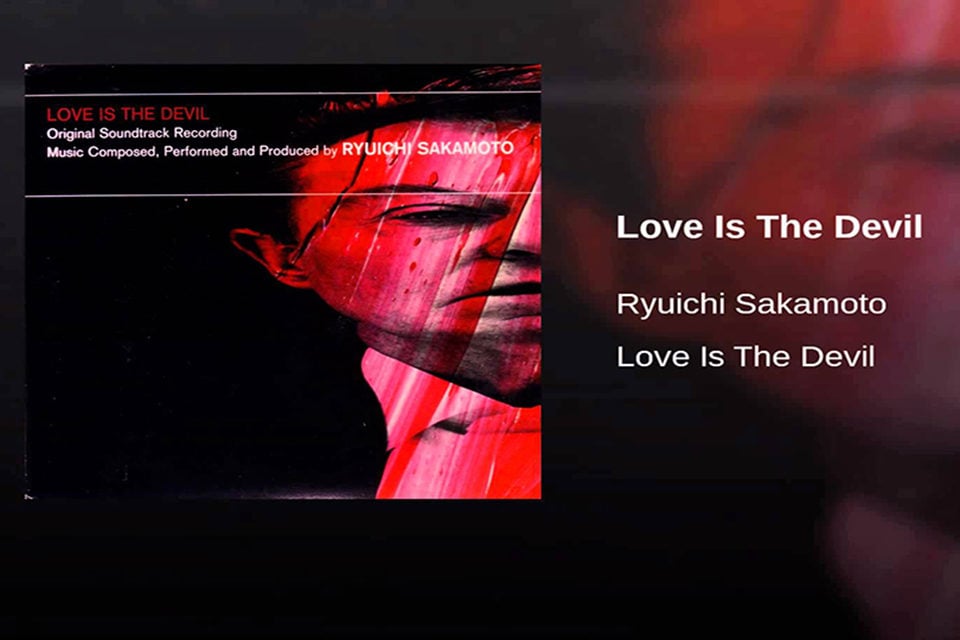
Within this stark atmosphere, the score helps to add a measure of sympathy and even tenderness. The pop sensibility that Sakamoto honed as a synth-pop wunderkind with Japan’s Yellow Magic Orchestra has resulted in a number of unusually catchy scores, such that even his sweeping, humanistic compositions for The Last Emperor (1987) and Merry Christmas, Mr. Lawrence (1983) are compulsively hummable. The same lyricism shares a space with the expressionist Sturm und Drang of Love Is the Devil. As Craig’s Dyer luxuriates in the bathtub during a rare moment of untroubled intimacy, Sakamoto responds with a languorous piano tune played against undulating synths. A noirish, descending melody (titled “Walk” on the soundtrack) foreshadows the work he would do the following year on another queer-themed film with a not entirely sex-positive perspective on male desire, Nagisa Oshima’s Taboo.
Above all, the film’s catchy, minor-key main theme exudes pathos. First introduced in the opening scene, when Bacon returns home after the ill-fated Paris trip and buries his head in Dyer’s pillow, it steadily gains resonance throughout the film. It’s a profoundly lonely little tune, and yet it draws a degree of poignancy from its proximity to the noisier experiments. As in Bacon’s work, there’s something powerful to be found in the space between raw feeling and heady distortion.
Closer Look: Stephen Nomura Schible’s Ryuichi Sakamoto: Coda opens on July 6 at the Film Society of Lincoln Center.
Daniel Witkin is a writer and filmmaker based in New York City. His work has appeared in Film Comment, Reverse Shot, and The Forward, among other publications.



